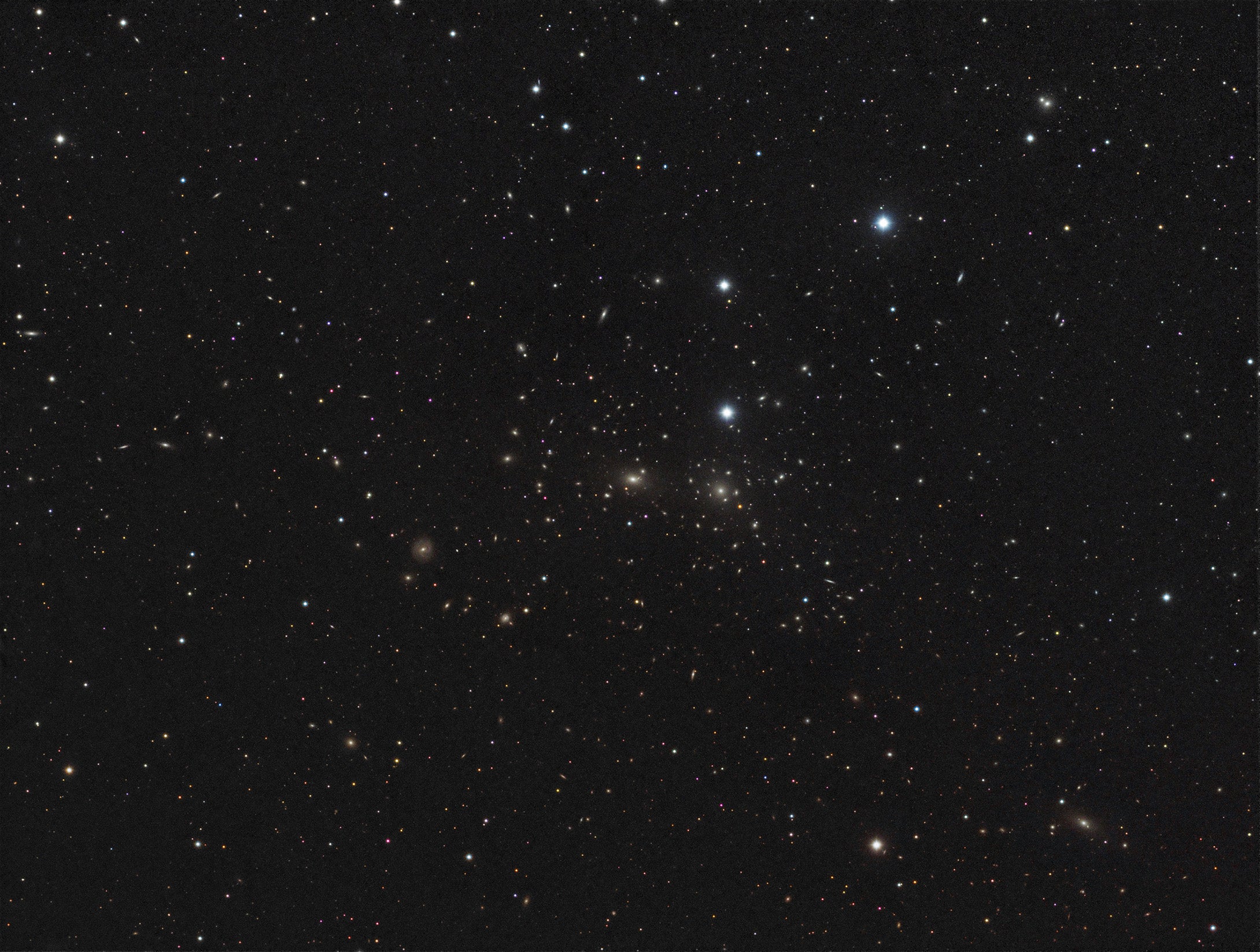
The Coma Cluster of galaxies is among the densest known. This turbulent array of more than 3,000 galaxies (mostly ellipticals and lenticulars) forms a dim backdrop to the brighter Coma Berenices star cluster. Lying 330 million light-years distant, it is the nearest massive cluster of galaxies, parading across more than 20 million light-years of space. While the galaxies house billions of stars, a weird collection of nearly 50 cluster members appears to be almost invisible. These ghostlike objects appear to be rich in invisible dark matter — matter that cannot be seen but whose presence is inferred from gravitational effects.
While no one knows how these oddities originated, recent studies suggest they may be “failed” infant galaxies comprising 98 percent dark matter and just 2 percent observable matter. Astronomers posit that when the great gravitational pull of the Coma Cluster dragged these infants into its fold 7 billion years ago, it stripped them of their gas and dust — the ingredients needed to form new stars. The fact that these galaxies held together for so long suggests they must harbor lots of dark matter; otherwise the gravitational pull of other galaxies in the cluster would have torn them apart. Exactly how much dark matter they possess remains disputed as it is not an easy feat to measure their mass.
Reasonably bright objects in the Coma Cluster of galaxies are within reach of a 12-inch telescope under a dark sky: NGC 4889, 4793, and 4874. Larger apertures will reveal untold numbers of additional wonders.









